Soviet Union/Russia | United States | |
| July 13: British Prime-Minister Winston Churchill informs Soviet leader Joseph Stalin about the testing of German missiles in Poland. Aug. 5: A group of Soviet specialists departs for Poland to search for the German rocket technology. August-September: The Soviet troops capture first remnants of the German A-4 rocket, which are sent to Moscow for evaluation. | 1944 | September: Germany starts using A-4 ballistic missiles for attacks against London. |
| April-August: Russian engineers and scientists come to Germany to search and evaluate Nazi missile programs. Aug. 20: The Soviet government creates the 1st Special Committee to oversee the Soviet nuclear program. September: Helmut Gröttrup, a leading Peenemünde scientist, joins Soviet effort to restore the production of German A-4 missiles. November-December: Rocket development bureau is formed at Plant No. 88 in Podliki, near Moscow. | 1945 | A team of top German ballistic missile designers led by Wernher Von Braun surrenders to the US army occupying Germany. They eventually create a core of the missile development team at Redstone Arsenal in Hunstville, Ala. July 16: The first operant nuclear device codenamed "Gadget" is exploded at the "Trinity" test site in New Mexico. |
| April 9: The Soviet government officially approves the development of the atomic bomb. May 13: The Soviet government launches a wide-scale missile development program based on the German technology. Aug. 9: Sergei Korolev is appointed chief designer of the long-range ballistic missile development. Oct. 22: Soviet authorities deport dozens of German rocket engineers to the USSR. | 1946 | April 16: The first A-4 missile blasts off from White Sands, NM, reaching the altitude of 112 kilometers. April 19: Consolidated Vultee initiates MX-774 project (precursor of Atlas ICBM).
|
| January: NII-88 initiates studies of the R-3 missile with the range of 3,000 kilometers. Sept. 25: NII-88 conducts an official scientific review of the G-1 project proposed by the team of German engineers. Oct. 18: The first German A-4 rocket is launched from Kapustin Yar.
| 1947
A-4 missile | June: The program of a long-range ballistic missile (MX-774) is canceled as "not promising." |
| April 14: The Soviet government approves the development of the R-1, a Soviet copy of German A-4 rocket. Sept. 17: The R-1 is launched for the first time. Oct. 10: The first successful launch of the R-1 missile. | 1948 | July 1: Consolidated Vultee attempts to launch first MX-774 test missile. It fails after one minute in flight. Sept. 27: MX-774 experimental missile reaches 40 miles in altitude before its malfunction. Dec. 2: MX-774 experimental missile fails during its third test flight. |
| February: USSR succeeds in the production of the military-grade plutonium. Summer: The KB-11 (Arzamas-16) design bureau completes the development of the atomic bomb. Aug. 29: The USSR detonates its first nuclear device at a test site near Semipalatinsk. Sept. 21: The first R-2E ballistic missile is launched. | 1949 | Feb. 24: The Bumper-5 rocket reaches altitude of 393 kilometers (244 miles).
|
| April 26: Sergei Korolev officially becomes a chief designer of OKB-1, the developer of the Soviet long-range ballistic missiles. Nov. 25: The R-1 rocket is accepted into the armaments of the Soviet Army. | 1950 | July: The first rocket (German A-4 with WAC "Bumper" second stage) blasts off from Cape Canaveral. The US Navy started development of a "Big Stoop" submarine-launched missile. |
| Myasishev and Tupolev initiate the devlopment of M-4 and Tu-95 strategic bombers. June 1, Nov. 30: Soviet government orders mass production of R-1 and R-2 missiles, respectively. Nov. 27: The R-2 missile is accepted into the armaments of the Soviet Army. | 1951 | Jan. 23: US Government awards contract to Convair to develop MX-1593 (Atlas) ICBM. |
| Aug. 8 - Sept. 18: USSR conducts qualification test flights of the R-2 ballistic missile. Nov. 28: Plant No. 586 in Dnepropetrovsk starts mass production of R-1 missiles. | 1952 | |
| Feb. 13: The Soviet government approves preliminary studies of the R-7 ICBM. March 15: The first launch of the R-5 missile. April 18: The first launch of the R-11 missile. | 1953 |
|
| 1954 | The Viking rocket reaches the altitute of 254 kilometers (158 miles) and the speed of 6920 kilometers per hour (4,300 mph). | |
| Jan. 21: The first launch of the R-5M missile. Feb. 12: The government decrees the development of the NIIP-5 test range near Tyuratam (Baikonur Cosmodrome). Aug. 25: The government decree approves the development of the R-13 ballistic missiles for strategic submarines. Sept. 16: The first launch of the R-11FM missile from a Soviet submarine. | Jan. 14: The US Air Force awards a contract to Convair to develop Atlas ICBM. Sept. 13: President Eisenhower approves the development of a submarine-launched IRBM. Oct. 27: US Air Force awarded Martin company to develop SM-68 Titan ICBM. Nov. 8: Secretary of Defense Charles E. Wilson approves the development of Thor and Jupiter IRBMs. | |
| Myasishev M-4 strategic bomber enters operational service. Feb. 2: The R-5M missile flies an experimental mission with a live nuclear warhead. June 21: The Soviet Army accepts R-5M nuclear-tipped missile into armaments | 1956 | The Aerobee-Hi AGUL-0113C rocket reaches the altitude of 264 kilometers (164 miles). |
| May 15: The first test launch of the R-7 ICBM (failed after 20 seconds in flight). June 22: The R-12 IRBM flies a first test mission from Kapustin Yar. July: An attempt to launch the R-7 ICBM ends in failure. Aug. 21: R-7 ICBM completes the first successful test flight. Oct. 4: World's first artificial satellite is launched. Nov. 3: Sputnik-2, carrying dog Laika, is launched. Dec. 6: The Soviet government makes a decision to provide China with the production license for the R-2 missile. | 1957
Sputnik-1 | Jan. 25: Thor IRBM fails during launch attempt, destroying its launch pad. March: The first Jupiter IRBM flies an (unsuccesful) test mission from Cape Canaveral. May 31: Jupiter IRBM flies a first successful mission, covering 1,500 miles. June 11: The Atlas A rocket flies its first test mission. It failed 22 seconds after launch. Sept. 20: Thor IRBM flies its first successful mission, covering 1,100 miles. Sept. 25: The second test flight of the Atlas A ICBM is termininated after around three minutes. Dec. 17: Atlas ICBM flies its first successful mission. |
| Jan. 2: The Soviet government issues a decree approving serial production of the R-7 missile in Kuibyshev (Samara). March 20: The Soviet government issues a decree approving the development of the D-4 submarine system equipped with R-21 ballistic missiles. April: Chief designers of the Soviet rocket industry propose the development of the R-9 ICBM. April: The Soviet government approves the development of the R-17 ballistic missile. June 30: The Soviet government approves the development of a rocket with a nuclear engine. July 2: The Soviet government approves the development of the R-14 IRBM. Dec. 24: The R-7A ICBM flies its first test mission. | 1958
R-7 ICBM | Jan. 11: A prototype of Polaris A-1 submarine-launched missile flew its first mission from Point Mugu, CA. Jan. 31: Jupiter rocket launches Explorer-1, the first US satellite. Feb. 27: The Air Force initiates missile "Q" program, envisioning first ever solid-propellant ICBM (later Minuteman). Oct. 9: Boeing Aircraft is selected as a prime-contractor for the SM-80 Minuteman program. Dec. 20: First attempt to launch Titan I ICBM.
|
| March 4: The R-12 IRBM is accepted into the armaments of the Soviet Army. May 13: The Soviet government approves parallel development of R-9 with cryogenic oxidizer and R-16 ICBMs, burning storable propellants. Nov. 20: The Soviet government approves the development of the RT-1 IRBM. Dec. 17: The Soviet government forms Strategic Missile Forces. | 1959 | Feb. 6: Titan I missile flies its first successful test mission. May 28: The first primates (Able and Baker) complete a suborbital flight onboard Jupiter ballistic missile. |
| Jan. 1: A Battlefield Launch Station in Plesetsk armed with R-7A missile is declared operational. Jan. 20: The R-7 ICBM enters armaments.
October 24: Close to 100 people die during and in the aftermath of the explosion of the R-16 ICBM in Baikonur. | 1960
Nedelin disaster | June 20: US Air Force awarded Martin a contract to develop Titan II ICBM, burning storable propellants. August: The Discoverer satellite returns capsule from orbit. |
| Feb. 2: The R-16 ICBM flies its first test mission. March: OKB-586 completes preliminary design of R-26 ICBM. April 9: The R-9 ICBM flies its first test mission. April 21: The R-9 ICBM flies its first successful mission. April 24: R-14 missiles adopted into armaments. Oct. 13: The D-2 submarine system with R-13 missiles is declared operational. Oct. 20: The R-16 ICBM adopted into armaments. Oct. 30: USSR live-tested a 50-megaton hydrogen bomb on the island of Novaya Zemlya in the Arctic Ocean. November-December: Nuclear and rocket specialists discuss the possibility of deploying a 100-megaton bomb on the N1 rocket. |
| |
| R-14 missiles deployed in Latvia and Ukraine. March: R-17 IRBM was adopted into armaments of the Soviet Army. April 28: The RT-1 IRBM flies its first test mission. June 12: The Soviet government approves the development of the R-36 ICBM and cancels development of R-26. Oct. 22 - Nov. 21: The Cuban missile crisis | May 6: The Ethan Allen (SSBN-08) becomes the first submarine to launch a live nuclear-tipped missile, whose warhead detonated on the Christmas Island test range. Sept. 12 : Titan II ICBM flies its first test mission. | |
| May 15: An R-21 submarine-launched ballistic missile is accepted into armaments of the Soviet Navy. July 15: Silo-based R-12U, R-14U IRBM and R-16U ICBM enter armaments of the Soviet Army. Aug. 30: The Soviet Ministry of Defense forms an ICBM deployment site near Plesetsk. Sept. 28: The R-36 ICBM fails immediately after its first launch attempt. Nov. 1: Polyot-1, a first prototype of the anti-satellite weapon enters orbit. Dec. 19: Zenit-1 spy satellite enters orbit. | 1963
R-16U in silo | May 24: US Air Force makes a decision to retire all Atlas D ICBM by 1965 and Atlas E by 1968. |
| January: R-12U and R-14U IRBMs are accepted into armaments of the Soviet Army. October: Central Directorate of Space Assets is formed within Soviet Ministry of Defense. | 1964 | Sept. 24: The first Minuteman II ICBM flies a successful test mission. |
| Jan. 14: R-36 ICBM is launched from silo for the first time. May 9: During Victory celebration parade, the USSR demonstrates its first solid-fueled ICBM (RT-2). December: R-36O FOBS missile flies its first test mission. | 1965 | April 12: Last Atlas F ICBM is retired from service. April 15: Last Titan I ICBM is retired from service. July 15: Boeing Aerospace receives a contract for development of Minuteman III ICBM. |
| Feb. 26: RT-2 ICBM flies its first test mission from Kapustin Yar. June 25: French President Charles De Gaulle visits Baikonur Cosmodrome; watches launches of an ICBM, a launch vehicle. Oct. 1: The Soyuz rocket delivers the first Yantar spy satellite. | 1966 | US Navy initiates Undersea Long-range Missile System (ULMS), which will lead to the Trident II (D-5) system. |
| July 21: R-36, UR-100 ICBMs are accepted into armaments of the Soviet Army. October: The first RT-20P mobile ICBM is launched from Plesetsk. Oct. 27: The Tsyklon-2 rocket, designed to carry IS anti-satellite weapons, flies its first mission from Baikonur. | 1967
RT-20P |
|
|
Nov. 19: R-36O FOBS missile is accepted into the armaments of the Soviet Army. Dec. 18: The RT-2 ICBM is adopted in armaments of the Soviet Army. | Aug. 16: The first Minuteman III missile flies a successful test mission. Aug. 18: The first Poseidon SLBM is launched from the surface pad at Cape Canaveral. | |
|
Sept. 2: Council of Ministers of the USSR approved the development of the R-36M missile. Oct. 6: Soviet government cancels development of RT-20P ICBM. Dec. 24: Satellite watching radar stations in Balkhash and Irkutsk are declared operational. | 1969
| April 11: The Minuteman III missile blast off from the silo for the first time. |
| January: RT-2P ICBM flies its first test mission from Plesetsk. March: The first unit armed with UR-100K missiles enters operational patrol near the town of Khmilnitskiy. October: The R-36 missiles with MIRV warhead is accepted into armaments of the Soviet Army. | 1970
UR-100 missile | Aug. 3: Poseidon C-3 ICBM flies its first mission from a submerged submarine. |
| Feb. 2: The UR-100K ICBM flies its first test mission from Baikonur. | 1971 | Sept. 14: US Secretary of Defense Melvin R. Laird approved development of ULMS systems (later Trident I C-4 SLBM). |
| The USSR signs anti-missile defense treaty with the US. Dec. 28: RT-2P and UR-100 K missiles are accepted into armaments of the Soviet Army. | 1972 | The US signs anti-missile defense treaty with the USSR. |
| Feb. 21: The first R-36M missile blasts off from Baikonur.
| 1973 |
|
| Sept. 21: The Pioneer (SS-20) medium-range missile makes its first test flight. R-16 missiles retired from service. | 1974 | |
| Dec. 22: Proton launches Raduga-1 comsat. Dec. 30: R-36M and MR-UR-100 missiles accepted into armaments. | 1975 | |
| Aug. 16: The Soviet government approves the development of the MR-UR-100U missile. Aug. 30: First Pioneer missiles are deployed near town of Petrikov, Gomel Oblast. R-36M is accepted into the armaments. R-16U missiles retire from service. Dec. 22: The first Soviet solid-propellant missile (developed at KB Arsenal) lifts off from a submarine. | 1976
R-36M | |
| Sept. 25: MR-UR-100U flies its first test mission. October: R-36M UTTKh flies its first test mission. | 1977 | Jan. 18: The first Trident I C-4 SLBM flies a test mission from a surface pad. |
| R-36 missiles retired from service. | 1978 | April: First contracts to develop MX ICBM were issued to Martin Marietta and Rockwell's Rocketdyne division. |
| R-36 missiles with MIRV warhead retired from service. | 1979 | April 10: Trident I missile flies its first test mission from a submerged submarine. |
| Dec. 17: R-36M UTTKh and MR-UR-100 UTTKh missiles are formally accepted into armaments. | 1980 | |
| June: A mobile command center of the Strategic Missile Forces starts operational patrol. November: Main Directorate of Space Assets is transferred from the Strategic Missile Forces to direct subordination to the Ministry of Defense. | 1981
|
|
| Oct. 26: The first RT-23 light-weight, silo-based ICBM (a single warhead version 15Zh44) flies a test mission from Plesetsk. R-36M ICBM (Version 15A14) retired from service. | 1982 | |
| July: OKB Yuzhnoe intitiates the development of the Krechet air-launched strategic missile. Aug. 9: The Soviet government approves the development of the R-36M-2 and RT-23UTTKh missiles. MR-UR-100 ICBM retired from service. | March 23: President Reagan announced Strategic Defense Initiative, SDI, aimed to develop multi-layered anti-missile defense shield for the US. April 9: President Reagan approved the recommendation to develop Small ICBM (SICBM), aka Midgetman. June 18: The first MX Peacekeeper ICBM flies its first test mission. Oct. 21: Navy issues contract to Lockheed to develop Trident II (D-5). | |
| Jan. 18: The first railroad-based RT-23 ICBM (version 15Zh52) flies a test mission from Plesetsk. June 27 - July 5: During Zapad (West) 84 military exercise, a mobile ICBM unit conducts first ever river crossing over a temporary bridge. | 1984 | |
| Feb. 27: A modified RT-23 UTTKh railroad-based ICBM (version 15Zh61) was launched from Plesetsk for the first time. July-December: KB Yuzhnoe studies a project of the Kopye-R highly-mobile ICBM. | 1985
RT-23 railway launcher | |
| March: Beginning of flight tests of the R-36M2 ICBM. July 31: A silo-based RT-23UTTKh missile (Version 15Zh60) launched for the first time. | 1986
| |
| Oct. 20: The first unit armed with RT-23UTTKh railroad-based ICBMs entered battlefield patrol. R-14 and R-14U missiles retired from service. | 1987 | Jan. 15: Trident II (D-5) missile flew its first test mission from the surface pad 46A at Cape Canaveral. Oct. 22: The first SICBM (Midgetman) flies a test mission from Vandenberg AFB. |
| Aug. 11: The R-36M2 missile is accepted into armaments. | 1988
| |
| June: Last R-12 missiles decomissioned from service. Oct. 19: Last nuclear test is conducted at Semipalatinsk site. Nov. 28: RT-23UTTKh complex is accepted into armaments of the Soviet Army. | 1989 |
|
| August: R-36M2 is accepted into armaments of the Soviet Army. December: Perimeter RTs system with 15PO11 complex is accepted into armaments. | 1990 |
|
|
December: The Soviet Union officially dissolved in the aftermath of the communist coup attempt in Moscow in August 1991. | 1991 | |
| May 23: In Lisbon, former republics of the USSR agree to join non-proliferation regime and establish non-nuclear status, transferring all nuclear weapons and their delivery systems to Russia. | 1992 | |
| Jan. 3: In Moscow US and Russian presidents sign Strategic Arms Limitation Treaty START-II. February: Russian president approves development of Topol-M, a single-warhead mobile and silo-based ICBM. UR-100K missiles retire from service. | 1993 | |
| Dec. 20: Topol-M ICBM flies its first test mission from Plesetsk. Dec. 26: Rockot (capable of carrying anti-satellite systems) flies a test mission. Last RT-2P missiles retired from service. | 1994 | |
| April: Russia initiates implosions of 104 silo launch complexes in Kazakhstan for R-36M ICBMs. | 1995
|
|
| Aug. 26: Russia completes withdrawl of strategic missile assets from the former Soviet republic of Kazakhstan. Dec. 26: Russia completes withdrawl of strategic missile assets from the former Soviet republic of Belarus. | 1996 |
|
| June 16: Russian President Boris Yeltsin signs a decree merging Space and Missile Forces, VKS, and Space Defense Forces, RKO, with Strategic Missile Forces. Nov. 19: The Bark submarine-launched missile failed and exploded during its third and last test flight. Dec. 24: The first unit of Topol-M missiles is declared operational in Tatishevo. | 1997
Topol ICBM | |
| April 15: R-36M2 ICBM with 10 MIRV warheads flies a test mission successfully hitting all its targets in Kamchatka. North Korea's Taepodong-1 missile flies over Japan during a surprise test. | 1998 | |
|
| 1999 |
|
|
| 2000
|
|
| Feb. 16: The old Topol-type mobile ICBM flew a certification and test mission from Plesetsk. June 5: A submerged submarine launched a ballistic missile duringan exercise. July 20: The R-29RL (RSM-50) ballistic missile, also known as Volna launcher, carrying the solar-sailing spacecraft blasted off from the submerged nuclear sub. Sept. 18: The long-range ballistic missile blasted off from the Podolsk submarine in the Sea of Okhotsk and successfully reached the target in the Barents Sea. Oct. 18: Russia's Northern fleet conducted a training launch of a submarine-based ballistic missile.
| ||
| July 12: A Russian strategic submarine, launched a ballistic missile carrying an inflatable reentry device. Oct. 2 : Russia conducts test launch of the A-135 anti-missle defense system (51T6). Oct. 12: Two submarines fired SLBMs, while Topol (RS-12M) ICBM flew a training mission from Plesetsk. The same day, Tu-160 and Tu-95 strategic bombers launched long-range cruise missiles. | 2002 | December: The US conduct a missile defense system test. |
| March 27: An operational unit of the Strategic Missile Forces, RVSN, conducted a training launch of the Topol (RS-12M) missile. | 2003 | |
| Feb. 16 - 18: Russia staged a massive display of its rocket power -- as part of the Security-2004 war games. Scheduled on the eve of the March 14 presidential elections, multiple missile firings from the sea, air and land were intended to add points to the incumbent president Vladimir Putin. Nov. 29: Russia conducts test launch of the A-135 antimissle defense system (53T6). Dec. 24: Russia conducted a launch of the Topol-M ICBM from a mobile launcher, clearing the way for operational deployment of the system. | 2004 | Jan. 26: Missile interceptor flew a test mission from Meck Island in the Kwajalein Island Atoll, for the Ground-based Midcourse Defense program. Dec. 13: The Boeing Ground-based Midcourse Defense (GMD) program team and the Missile Defense Agency emplaced the first GMD interceptor in its underground silo at Vandenberg Air Force Base, Calif. Dec. 15: The US missile interceptor failed to blast off from Marshall Island after the target Polaris missile was launched from Kodiak Island, Alaska, in the $85 million test of the missile defense system. |
2005 | Feb. 14: An interceptor missile failed to lift off from Marshall Islands due to the failure of the launch system, moments before a missile defense test. Nov. 17: An interceptor missile fired from cruiser USS Lake Erie successfully destroyed the warhead of the incoming rocket about 100 miles (160 kilometers) above the Pacific. It was the first time a ship at sea has shot down a separated warhead. Dec. 24: Japan joined the US missile defence programme. Prime Minister Junichuro Koizumi signed off a budget, allocating more than $25 million (£14.4m) for initial work. | |
Jan. 21, 11:00: Russia tested anti-missile at the Sary-Shagan test site Jan 31: Russian Defense Minister Sergei Ivanov announced that Russia would build an AMD facility in the south of the country. July 4: North Korea launched several missiles, one of them long-range Taepodong-2 long range missile, which failed 30-50 seconds after liftoff. Dec. 5: Russia flight-tested the A-135 (53T6) antimissile at the Sary-Shagan range | 2006 | Sept. 1: The US missile interceptor, launched from Vandenberg AFB, shot down a target missile launched from Kodiak, Alaska. |
May 29: An ICBM capable of carrying multiple warheads and identified as RS-24 flew a test mission from Plesetsk. July: The Sineva submarine-based missile is accepted into the armaments of the Russian navy, according to Roskosmos. Oct. 11: Russia flight-tested a short-range antimissile at the Sary-Shagan range. Oct. 30: Russia flight-tested a short-range antimissile at the Sary-Shagan range. | 2007 | |
2008 | ||
2009 | ||
| January: China conducted an anti-missile intercept test. | 2010 | Feb. 1: A missile interceptor launched from Vandenberg AFB missed a target missile launched from a Pacific island due to radar problems. |
| Dec. 20, 12:01 Moscow Time: A 53T6 short-range anti-missile interceptor from the A-135 missile system is launched from the Sary-Shagan test range. | 2011 | |
April 4: The Antei-2500 system successfully intercepts a target cruise missile during test in Kapustin Yar. Oct. 16, 12:01 Moscow Time: The 53T6 missile-interceptor from the A-135 system flies a successful test mission from the Sary Shagan site. | 2012 | May 9: The Missile Defense Agency, MDA, and a US Navy ship Lake Erie (CG 70) successfully conducted a flight test of the Aegis Ballistic Missile Defense, BMD, system, resulting in the first intercept of a short-range ballistic missile target over the Pacific Ocean by the Navy's newest Missile Defense interceptor, the Standard Missile-3, SM-3, Block 1B. |
2013 | Jan. 27: The US launched an interceptor missile from Vandenberg AFB testing anti-ballistic missile system. |
Pages
- Ramalingam K B Home
- Facebook Profile
- Plus Profile
- AERO Blogspot
- AEROSAPIENS would love it
- ACF - ANTI CORRUPTION FORCE
- AERO BOOKS
- AERO DOCS
- Technical Reports Library
- All US Aircrafts
- All the world Aircrafts - Military
- AERO LECTURES
- mj Blogspot
- World is fragile without LOVE
- Recommended Websites
- Contact me
BOOK OF THE WEEK
Sunday, February 9
MISSILE RACE BETWEEN EAST AND WEST
Subscribe to:
Post Comments (Atom)

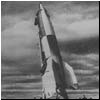
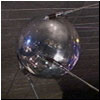
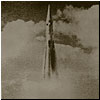
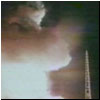
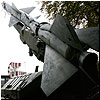
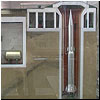
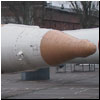
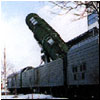
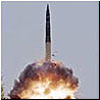
No comments:
Post a Comment